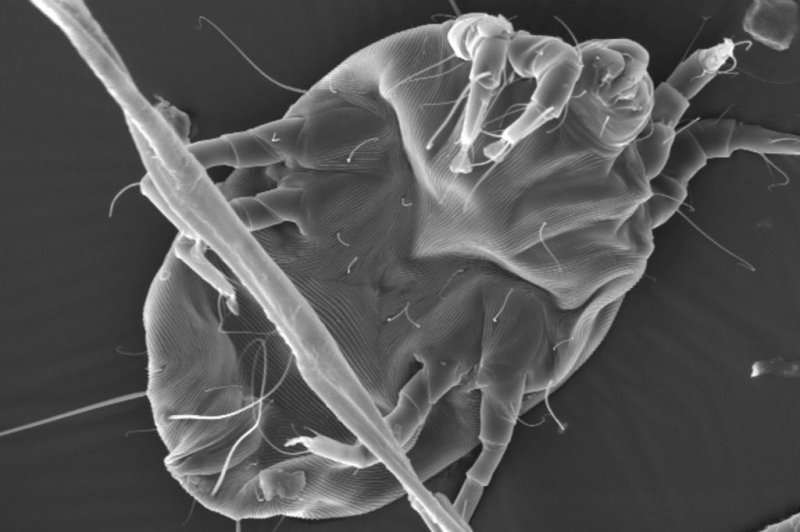New research is helping scientists understand why some proteins in dust mites elicit an allergic reaction while others don't. Photo by Holly Leddy/Duke University
DURHAM, N.C., Oct. 19 (UPI) -- Why are some proteins allergens and others not? New research suggests the stability and abundance of a protein may play a role in determining whether or not it will elicit an allergic reaction.
Recently, researchers at Duke University measured the stability and abundance of proteins found in dust mites, a common source of allergens. The findings -- detailed in the Journal of Allergy and Clinical Immunology -- suggest both qualities are important in distinguishing between allergens and non-allergens.
"Interestingly the allergens weren't just more abundant, and they weren't just more stable, they were both more abundant and more stable," Michael Fitzgerald, professor of chemistry at Duke, said in a news release. "This helps us understand at a fundamental level why certain proteins are allergenic."
Like DNA, proteins are made of long chains of amino acids that must be folded up to fit inside a cell. A protein's stability describes the likelihood it will remain in its neatly folded position. Until recently, scientists could only measure stability one protein at a time. Fitzgerald and his colleagues developed a way to measure the stability of dozens of proteins at once.
"Most proteins are stable, folded three-dimensional structures, and understanding how stable they are, putting a number on that, quantifying that, can be useful in a number of different applications, from drug mode-of-action studies to characterizing disease states," Fitzgerald said.
Fitzgerald and Geoffrey Mueller, a staff scientist at the National Institute of Environmental Health Sciences, used the novel stability measurement method to test 19 known allergens and 659 non-allergens found in dust mites.
The results proved the differences between allergens and non-allergens were statistically significant, but researchers found several highly stable and abundant non-allergens -- undermining the correlation.
Mueller thinks many non-allergens may hold the potential to be allergenic. Humans may only be exposed to a handful of the hundreds of proteins found in dust mites. If humans aren't exposed to a majority of proteins, then they can't become sensitized to them.
"Unlike pollen, we don't really breathe in full dust mites, so what you are exposed to is actually a subset of what you find in the dust mite," Mueller said.
The two researchers are aiming to conduct similar tests using proteins found in other allergen sources, like pollen and cockroaches.
"Proteins are becoming more and more widely used in various consumer products, from GMOs to therapeutic medicines," Fitzgerald said. "This may help predict which ones of those may be more or less allergenic."















